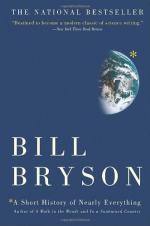|
This section contains 547 words (approx. 2 pages at 400 words per page) |

|
Part 5, Chapter 21 Summary and Analysis
Most life on earth has left no record at all. Less than one out of 10,000 species has made it to the fossil record. Based on the current estimate of 30 billion species since the formation of the planet, Richard Leakey and Roger Lewin suggest the number of known fossilized species is closer to one in 120,000. Fossils represent only the tiniest sample of life on Earth. Large parts of the world have never been explored for fossils.
Nearly 99.9 percent of all organisms die and decompose. Their molecules are put to use in another system. In order to become a fossil, an organism has to be buried in sediment or decompose without exposure to oxygen. Dissolved minerals must replace the bones, and occasionally the soft tissues. The site must remain undisturbed for millions of years until the fossil is found and recognized...
(read more from the Part 5, Chapter 21 Summary)
|
This section contains 547 words (approx. 2 pages at 400 words per page) |

|




